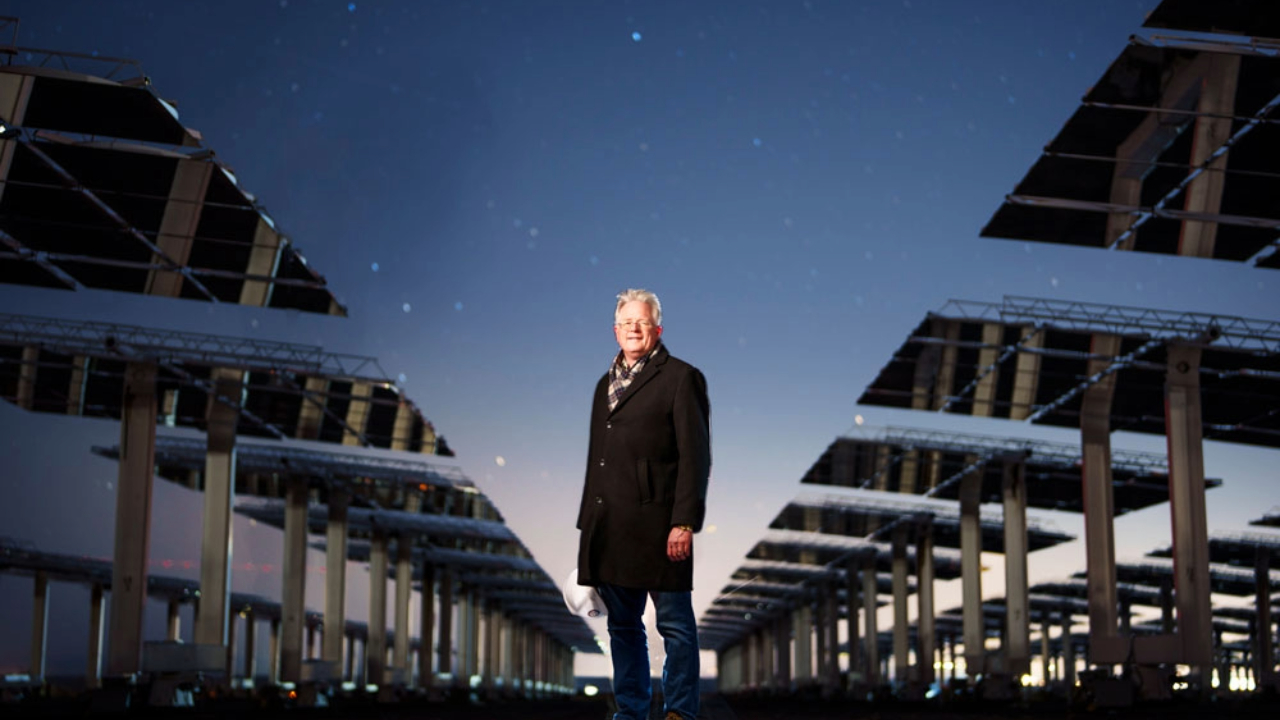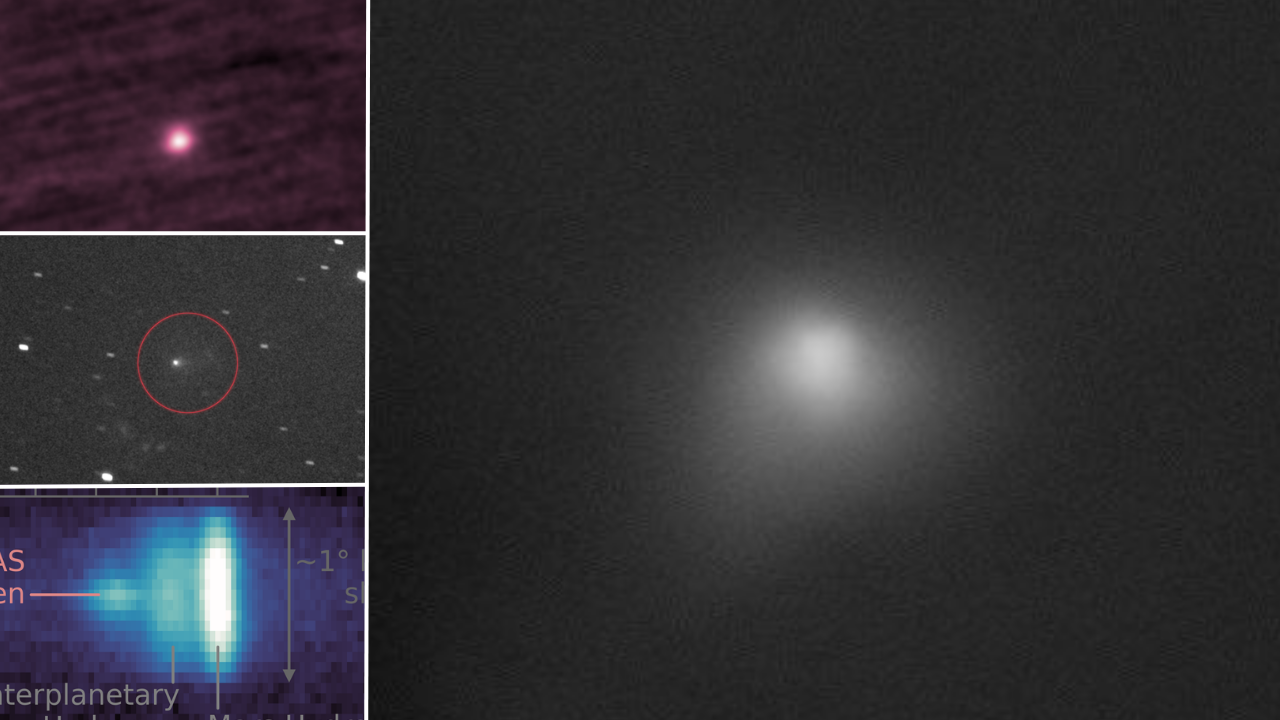Solar farms could help find dangerous asteroids, scientist says
"Initially, it'll just be a new tool, an augmentation to the existing toolbelt of astronomical observatories. But ultimately, it should scale least expensively to the smallest or more distant asteroids."

Under a dark, star-streaked sky, scientists at the Sandia National Laboratories in New Mexico are deploying an unconventional tool for planetary defense: heliostats.
"A heliostat is a very large — several meters on edge — motorized mirror that concentrates sunlight on a tower, like a giant magnifying glass," Sandia scientist John Sandusky told Space.com. "As the sun moves across the sky, the heliostat changes orientation to hold the sun's reflection fixed.
"During [the day], sunlight concentrated by the many heliostats boils water or melts salt to power electrical generators," he continued. "The generators collectively produce hundreds of megawatts of electricity for the power grid."
But, as he pointed out, heliostats don't have a job at night. After sunset, these vast fields of mirrors remain idle, covering acres of land but serving no purpose. "They just sit there unused," Sandusky said in a previous statement.
He proposes repurposing them to help find asteroids that might threaten Earth. "The heliostats work just as well in the dark," he explained to Space.com, "concentrating starlight at night the same way they concentrate sunlight during the day. Whereas sunlight boils water for the electrical grid, starlight generates a mere trickle of electricity on large photodiodes that are like the cells of a solar panel."
The sheer number of heliostats already available in the U.S. sparked the idea to use them for asteroid detection at night. Dim objects — like small asteroids near Earth or large ones farther away — require more light collection to spot. Rather than letting these mirrors sit idle, the plan is to put them to productive use with minimal added cost.
"[It's a] potentially cheap opportunity to use what we already have," Sandusky said. "Initially, it'll just be a new tool, an augmentation to the existing toolbelt of astronomical observatories. But ultimately, it should scale least expensively to the smallest or more distant asteroids."
Breaking space news, the latest updates on rocket launches, skywatching events and more!
Hunting asteroids with heliostats works differently from traditional telescope imaging. Instead of creating a picture by mapping where light lands on each sensor (or pixel), the heliostat method skips imaging entirely. It tracks how fast an object moves across the sky and converts that motion into a frequency signal — similar to how radar detects speed.
"It's like listening to a wind chime instead of hearing the wind blow," explained Sandusky. "The heliostats sweep gently against the stars, holding a steady rhythm through the night. The flow of light from the stars produces one tone. Light from an asteroid moving along the sweep produces a slightly different tone, because each sweep encounters the asteroid at a slightly different position against the stars.
"The difference in tone will typically be very small — less than one millihertz, [which is] much finer than our ears could distinguish," he continued. "But thanks to the extreme stability of GPS timing, precision electronics resolve this small difference over the course of a night. The faster the asteroid, the greater the difference in tone."
Sandusky has already spent summer nights testing his idea using one of the 212 heliostats at Sandia's National Solar Thermal Test Facility in Albuquerque, though he has not yet attempted to detect any asteroids. So far, the heliostat has been slowly redirected to sweep back and forth across the night sky, tracking stars as a first step in the experiment.
"The current hurdle is funding to demonstrate scaling from one heliostat to many and to reprogram the heliostat controllers to sweep against the stars instead of the horizon," he said. "To asteroid hunt on a global scale, Earth's various heliostat fields need synchronization to a common timing standard, like GPS. They must also be outfitted with photodiodes and other necessary optical and electronic devices."
This will take time, but Sandusky has already presented his initial experimental results and computational simulations at the Society of Photo-Optical Instrumentation Engineers' 2024 Unconventional Imaging, Sensing, and Adaptive Optics conference in San Diego. "Since this is an unconventional idea, the conference was a good fit," he said.
"The next step is criticism from the scientific and technical community, responding to the initial publication and identifying problems and limitations," he continued. "New ideas benefit from critical feedback. In parallel, we seek funding to outfit heliostats and make regular observations. Partnerships are needed to establish theoretical bounds and improve model fidelity."
The next step, he said, could involve using the heliostat to locate a known planet — an experiment that would help reveal the technology's capabilities and limitations.

A chemist turned science writer, Victoria Corless completed her Ph.D. in organic synthesis at the University of Toronto and, ever the cliché, realized lab work was not something she wanted to do for the rest of her days. After dabbling in science writing and a brief stint as a medical writer, Victoria joined Wiley’s Advanced Science News where she works as an editor and writer. On the side, she freelances for various outlets, including Research2Reality and Chemistry World.
You must confirm your public display name before commenting
Please logout and then login again, you will then be prompted to enter your display name.
